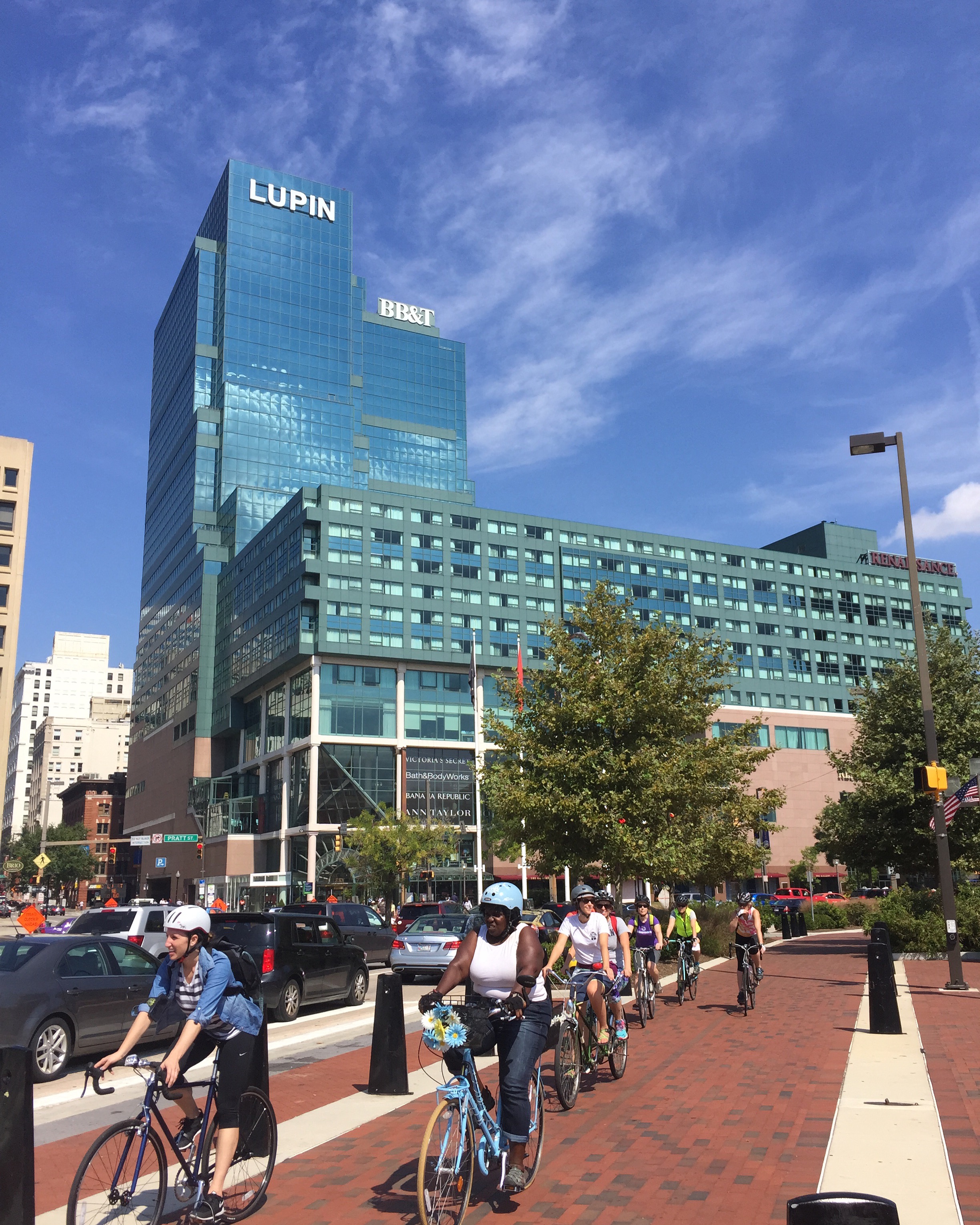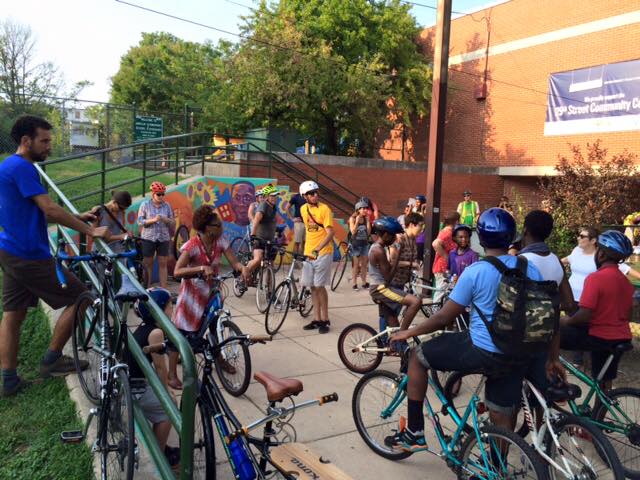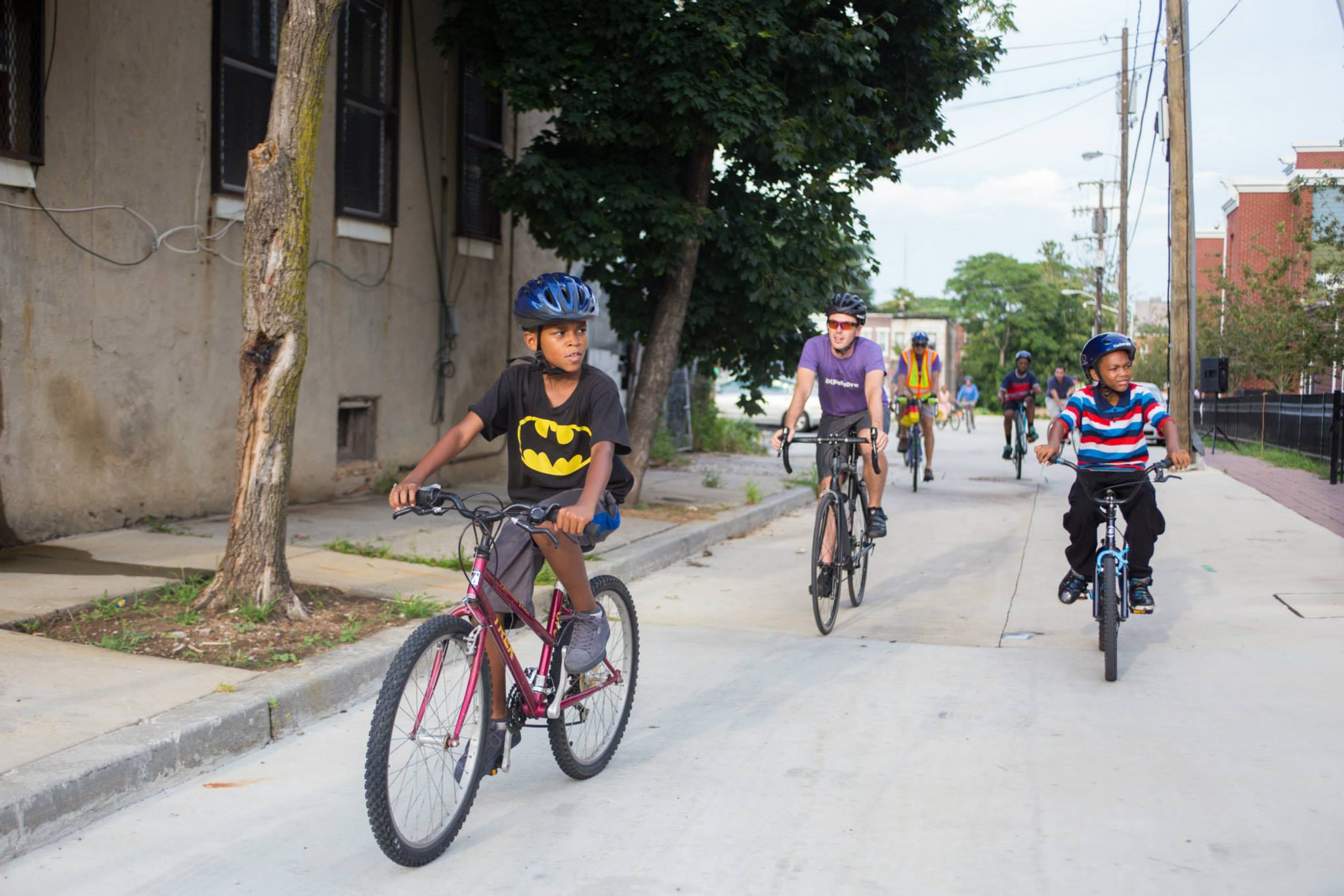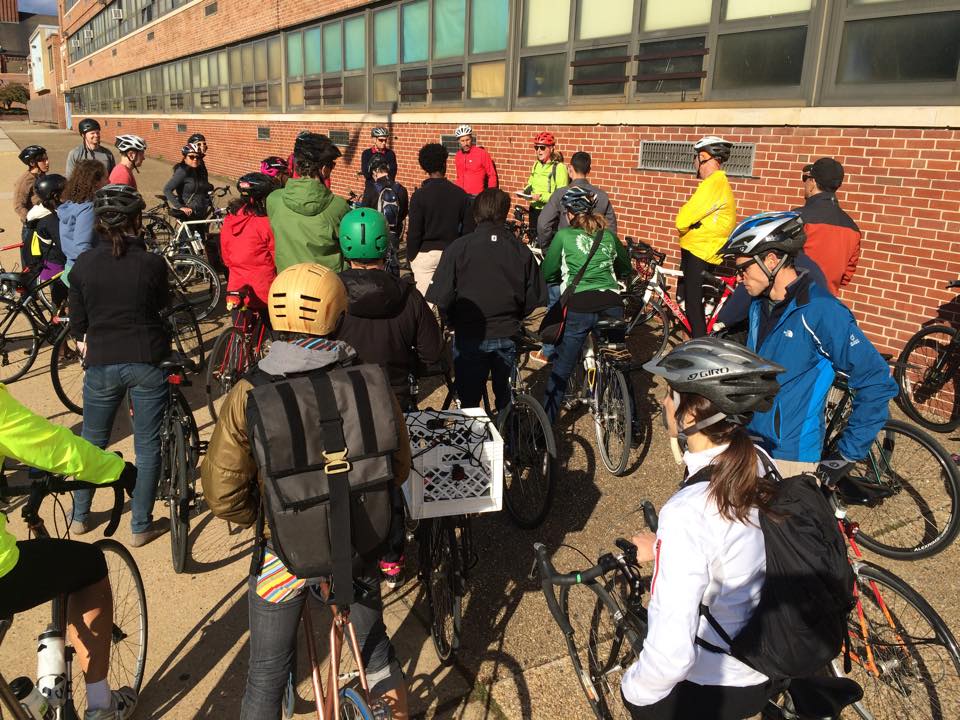Early rendering of the Maryland Avenue Cycletrack shown here between 29th and 28th st. Updated designs include flex posts throughout the project.
When Bikemore was formed in December of 2011, our board and stakeholders set forth advocacy priorities. These included the Maryland Avenue Cycletrack, Mt. Royal Streetscape Project, and Charm City Bike Share. While there have been many accomplishments along the way, these three priorities have continued to encounter critical challenges that have meant none of these projects have been completed.
We wanted to start the new year by taking a moment to review and update you on how these priorities continue to fit into our organizational goals. In a three part series released over the next few days, we will discuss where each of these projects stand, and how you--our members--can support our advocacy efforts to see each of these priorities is achieved.
Part I: Maryland Avenue Cycletrack
Summary
The facility is a two way cycle track on the east side of Maryland Avenue. The length of the facility is 2.6 miles and extends from 29th street to Pratt. The road will be narrowed to one southbound travel lane. Street parking will be retained throughout most of the corridor, and serve as the barrier “protecting” the cycletrack from moving traffic. Flex posts are also included in the design.
Challenges
- Funded through state and federal grants, the project has been subject to the State Highway Administration (SHA) Review process.
- Challenges in relationships and changing staff at both Baltimore City DOT (BCDOT) and at the Maryland Department of Transportation led to lengthy approval processes at each stage of the design process.
- Maryland Avenue became part of a larger project--the Downtown Bicycle Network which includes protected bike lanes on Monument and Madison and conventional bike lanes on Preston and Biddle, which led to further engineering delays as new plans were drawn and ushered through the approval process.
- Plans had to be reworked again in order to respond to community push back from the Mt. Vernon Business Association in order to retain hundreds of parking spaces.
- In 2015, the project spent most of the year in a back and forth between agencies on ADA compliance at intersections. The facility is now ADA compliant.
Where the project stands today:
On December 16th, Bikemore received notification from SHA that plans for the Downtown Bike Network were officially approved and are now back with the city. It is now up to the City to advertise. This is the furthest in the process this project has been, and marks a significant milestone. The city must advertise for a minimum of 21 days before a contract can be awarded. According to our sources at BCDOT, much of the work to prepare the Request for Proposals has been complete.
It’s our best estimation that if the city moves quickly, they can advertise and award in Feb/March. We believe that given all the delays, we will still be pushing for their estimated March 2016 groundbreaking. The construction will happen in stages, with Maryland Avenue being the first project to break ground. Construction is anticipated to last 90 days. The entire installation for the Downtown Bicycle Network is anticipated to last six months.
Lessons Learned
Communication between agencies at the city and state level is critical. We are grateful for new leadership at Maryland Department of Transportation and State Highway Administration that seems committed to ensuring that city plans don’t languish unnecessarily in the review stage. Both agencies have been helpful in listening to our concerns about project delays and being proactive in uncovering where the plans were held up in the process.
But even despite relationship building at the city and state level, both agencies engaged in a level of finger pointing that makes it difficult for us to truly assess where and why the delays occurred. It is our assessment that there are three factors at play that make it so difficult for Baltimore City to move quickly on state and federally funded projects.
- City and State engineers are not “on the same page” when it comes to engineering guidelines for biking facilities. The state has alluded to the city needing to produce stronger plans that would result in fewer revisions, and the city has alluded to the state needing to adopt more flexible design standards. We know from this recent article published by FHWA that this finger pointing is not a problem exclusive to Maryland, but our hope is that through our continued advocacy efforts we can get engineers at the state and local level to see eye to eye on where we can be innovative and flexible in our design choices to produce the safest, best infrastructure for our region.
- Lack of Political Will. When bike projects fall behind schedule, there is not a chorus of public outcry that follows. We’d like to change that. Many current elected officials don’t believe these livable streets projects are a priority of their constituents--so there is little incentive to act. But we found that often a few phone calls and in person meetings were all that it took to remind folks that people were watching and waiting on these projects to move forward. We wonder how much faster projects would move if there was more political leadership on these issues. That is why our advocacy campaign, I Bike, I Vote is so critical to changing the landscape for how and when these types of projects get built. When you have elected leaders that understand the intersectionality between public health, economics, safety and bike lanes, it's much easier to get folks to pick up the phone on your behalf.
- Lack of Accountability. As evident from the recent audit of DOT, it’s clear that while we know there is some great work occurring, we also know that there are few systems of accountability agency wide. Further, we know that because of the City’s procurement process that requires them to go with the lowest bid of a contractor, it nearly guarantees low quality work or excessive and costly change orders to compensate for the ridiculously low bid. We’ve seen this time and time again--facilities that are not installed to specifications that end up reducing the facility’s quality and safety. So the system of who installs and inspects these facilities is broken, and effects so much more than just bike and pedestrian facilities.
Advocacy Next Steps:
- Vote and encourage others to vote. Getting the right political leadership in place this next year will be critical to ensure we don’t take steps backwards. Bikemore will begin releasing candidate’s responses to our questionnaire beginning in February to help inform voters of their choices.
- Get involved in your community association. We find that a lot of the community backlash tends to concentrate here. Misinformation, anger over change are all things that can bubble up as projects begin construction. Having people that understand the facts and benefits of bike projects attending those meetings and building relationships with neighbors will go a long way. Not sure what your community association is or when they meet? Use this city website to look it up.
- Follow our facebook page to stay up to date on upcoming opportunities to show your support for the Maryland Avenue Cycletrack.
A year from now, biking in Baltimore is going to look and feel very different. Now is the time to continue to grow support for biking to make sure that these new facilities we fought so hard for are installed correctly, and not undermined by community backlash.
Tomorrow: Mt. Royal Streetscape Project




















